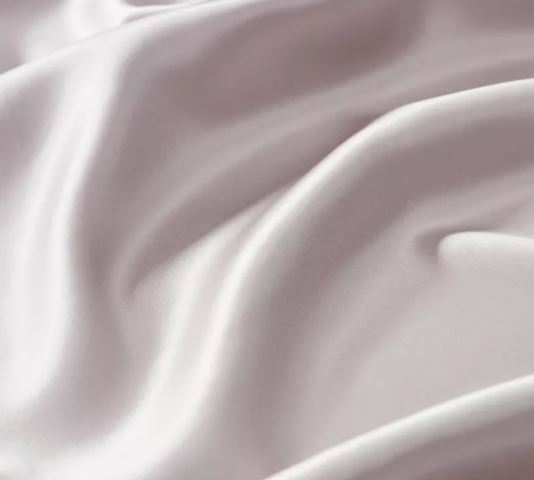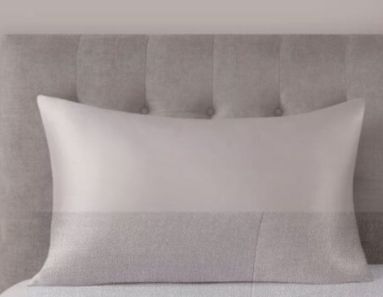Researchers have found that using silk pillowcases at night can help individuals with excessive sweating control the condition. For those who love to have a comfortable night’s sleep, silk is the natural cooling fabric that will minimize facial sweat while you doze.
Do Silk Pillowcases Make You Sweat?
No, silk pillowcases do not make you sweat because silk threads are thin and naturally reduce sweating by transporting moisture away from the skin. This optimizes heat and moisture dissipation through evaporation while allowing cooling.
Silk pillowcase ensures that the environment between your skin and the pillowcase remains less humid and is kept at a comfortable thermal condition.
Because of that special characteristic of silk, silk pillowcases are by far the best cooling fabrics for hot sleepers.
In this article, I identify the following
- What color of silk pillowcase you should choose.
- Who should use silk pillowcase.
- The biggest mistake people make while choosing silk pillowcase, and
- Several other benefits of silk pillowcases

Related: Do Satin Pillowcases Make You Sweat While Sleeping?
How silk leads to cooling
Compared with cotton which absorbs sweat, silk does not retain moisture. It pulls the moisture from the skin and transports it through the fabric.
Silk maintains the humidity of the skin surface by reducing sweat circulation and preventing excessive moisture loss.
Some of the characteristics of silk that makes it perform these important roles include the following:
- The material is breathable and lightweight.
- Its microfibers wick away potential moisture coming out of the skin.
The good news is that once you decide to break the bank and purchase them, silk pillowcases can last you between 10-15 years.

So, even though you might spend a lot of money, it is something that will last for several years without having to buy a new one.
What color of silk pillowcase should you choose?
A recommendation by Healthline indicates that the best color to pick for your pillowcase for those who sweat a lot is darker colors.
Darker colors or prints help to conceal sweat that may creep up on your pillow. Selecting a white silk pillowcase might not be a good idea because even if it prevents sweating, you might still have applied some hair oil or body lotion.
Have you ever touch silk? If you have, how did it feel? Cool? Wasn’t it? For those who haven’t, silk fabrics are cool to touch. They are the number one fabrics that control sweating during sleep with a pleasant feel on the skin surface.
When you experience less sweat at night, other benefits come along. For instance, less sweat means reduced oil on the body, lower bacterial growth on pores, and reduced skin breakouts.
So, silk is suitable for making your skin better. A fabric that keeps sweat at bay saves you a lot of effort you’d put in preventing acne.
Who should get silk pillowcases?
- Any person with dry skin needs to invest in quality silk pillowcases. These pillowcases allow the skin to retain more moisture and prevent further dehydration that could make the skin look wrinkled.
- People who want to protect their hair by stopping shedding at night should also consider having a pair of these fine pillowcases. Silk fabrics allow hair to glide over, unlike cotton. This reduces hair damage by over 80%.

Relationship between pillowcase, sweat, and wrinkles
Many people are scared of getting wrinkles as they age. There is nothing wrong with having wrinkles. Honestly, to me, it’s kind of beautiful how people age.
Using a silk pillowcase would help keep the skin more hydrated than if you were to use other types of pillowcases that make it harder for the skin to breathe.
A silk pillowcase is gentler on the face and allows skin pores to remain unclogged.
Again, these claims have not been proven to be 100% effective in scientific experiments. Yes, silk can reduce wrinkles by improving skin hydration.
Let’s assume your focus is on anti-aging. In that case, it might be better to remember that fine lines and wrinkles only contribute to about 5% of your facial signs of uneven skin tone. The other 95% can be managed through scientifically proven medical treatments.
Why I think everybody should switch to a silk pillowcase
Having slept on numerous silk pillowcases, I have noticed that there are variations in the quality of silk.
One thing I would recommend before you buy a silk pillowcase is to do your research to ensure that the silk is authentic, real, and of good quality.
There are so many businesses out there selling fake silk. Just make sure you’re getting yours from the best supplier around.
Hygienic – a silk pillowcase is resistant to dust, bugs, and dirt making it one of the most hygienic materials for your bedding.
Obviously, silk is a bit expensive but it is worth investing in.
Hair – Silk is also so much friendlier to your hair. It has been proven to reduce damage or breakage of hair. Because the material is slippery, it helps your hair slide easily and prevents possible breakage.
After switching to a silk pillowcase, you will immediately notice a huge difference in how much hair you lose when you go to sleep.
Silk pillowcase and allergy – The other reason to like silk pillowcases is the allergy friendliness. The material is a great option for people with sensitive skin.
Making a silk pillowcase your best friend could save you from endless skin irritation caused by chemicals that are usually added in common pillowcase materials.
Silk contains natural substances that ward off many allergens available in the environment including mold, fungus, and dust mites.
But all these benefits do not mean silk is 100% hypoallergenic. Not all people report the same allergy-free experiences.
Alternatives to silk pillowcases
We all wish silk wasn’t that expensive so that many people could try it out. Sometimes, it is just impossible to find the best silk around because producing quality pieces are so expensive and labor-intensive.
Research has shown that natural fabrics are often more comfortable than other types of materials. They are great at preventing excessive sweating during sleep.
So, what are the alternatives for you when silk is too expensive?
- Cotton – cotton pillowcases protect against sweat by helping keep the allowing regulated air circulation to keep the body cool.
- Wool – The Mayo Clinic recommends using wool as an alternative to silk for those who cannot afford it.
The biggest mistake people make when choosing pillowcases
I have seen people who think that they can get cheap silk pillowcases and go ahead and acquire low-quality fabrics from sneaky sellers. Inability to differentiate between fake silk and quality silk is the big mistake that one needs to avoid.
A silk pillowcase depending on quality can be the most important bedding you will ever acquire.
As silk fabrics grow in popularity, a ton of companies have joined the business and started making substandard pieces while using the name ‘silk’ to dupe customers.
This is their sneaky trick to keep silk prices low by weaving cotton into the pillowcase and label it 100% silk. You may not know by looking at it but your skin and hair won’t get the benefits they deserve.
The price of authentic silk that will best serve you won’t be those cheap ones you see online. So, if you’re wondering why some sellers are offering you silk at $10 while others are providing the same size for $200, quality should come to your mind.
But still, you want to make sure that you’re not forking out 200 bucks for a fake. Organic, hand-made silk is made in a labor-intensive process that cannot be available at those cheap prices.
To know quality silk, touch it. It shouldn’t be slippery and weighs a little more than the regular pillowcases.
Most importantly, buy from a reputable company rather than a random store that won’t give you the best fabric you deserve.

